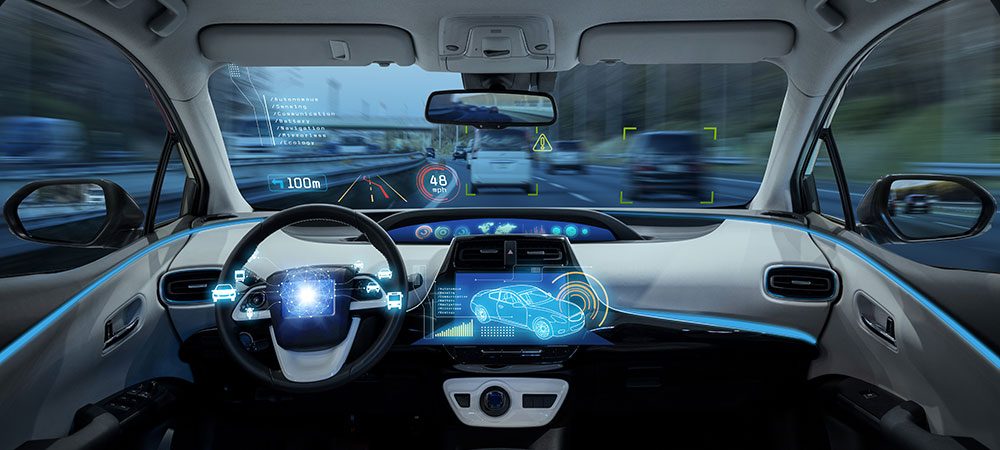A novel study undertaken by the University of Nottingham has found that, in the absence of someone in the driving seat, pedestrians trust certain visual prompts more than others when deciding whether to cross in front of an autonomous car.
The aim of the study was to understand how pedestrians respond naturally to self-driving vehicles with different External Human-Machine Interfaces (eHMIs) – visual displays positioned on the front of the vehicle. To do this, a car was driven around the university’s Park Campus over several days with a ‘ghost-driver’ concealed in the driver’s seat. A series of different designs projected onto the eHMI informed pedestrians of the car’s behaviour and intention – including expressive eyes and a face, accompanied by short text-based language such as ‘I have seen you’ or ‘I am giving way’.
The eHMI was controlled by a team member sat in the back seat, while front and rear dash cam footage was collected to observe pedestrians’ reactions in real time. Additionally, researchers were placed at four crossing points to ask pedestrians to complete a short survey about their experience of the vehicle and its displays.
David R. Large, Senior Research Fellow with the Human Factors Research Group at the University of Nottingham, said: “As part of the ServCity project, which created a blueprint infrastructure for autonomous vehicles in the UK, we wanted to explore how pedestrians would interact with a driverless car and developed this unique methodology to explore their reactions.
“We were keen to identify which designs invited the highest levels of trust by people wanting to cross the road. To do this we used three different levels of anthropomorphism; implicit, an LED strip designed to mimic an eye’s pupil, low, a vehicle centric icon and words such as ‘giving way’ and explicit, an expressive face and human-like language.”
The study took place over several days, during which time 520 pedestrians interacted with the car and 64 survey responses were collected. Several indicators from the dash cam footage were used to evaluate pedestrians’ crossing behaviour, including how long it took people to cross, how long they looked at the car and the number of times they glanced and/or gestured at the vehicle. This, combined with the survey results, gave researchers significant insights into people’s attitudes and behaviour in response to the different eHMI displays and autonomous vehicles more generally.
Click below to share this article

